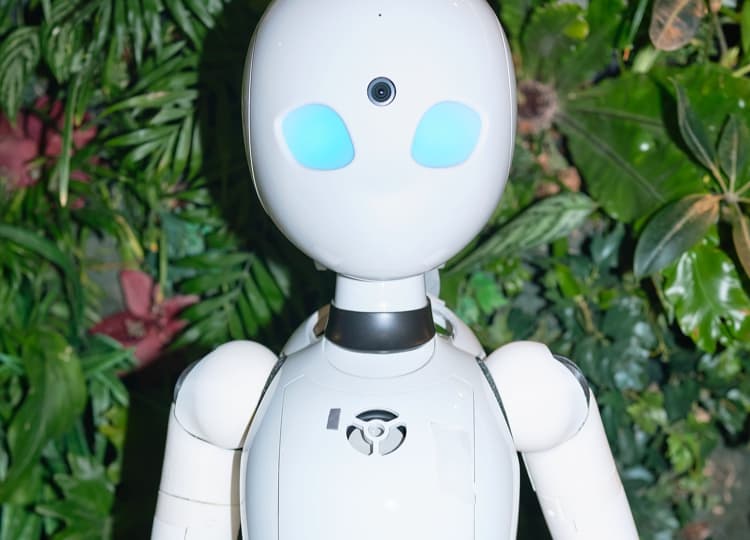
Ory YOSHIFUJI
Roboticist
Photographs by Takao IWASAWA │ Interview & Text by Yosuke TSUJI
- “Thank You” Inequality and How to Overcome It:
- The Various Journeys of Avatar Robot “OriHime”
“There were times, back when I wasn’t going to school, that I felt I wanted to die.”
So said Ory Yoshifuji, with a faint smile. His eyes gave off the impression of a man that is slightly nervous, high-strung. In his book, Cyborg Jidai (Kizuna Publishing), he defines impairment as “any and all obstacles that impede the realization of the things I want to do.”
“But what does it mean to want to die? I think it comes from a feeling that you don’t belong anywhere in the world. You want to exist, but you can’t, because you don’t belong anywhere. You want to live, but you can’t. I would definitely call that an impairment, personally.” This idea of “belonging” was something that would crop up repeatedly throughout the interview. “Right now, only 30% of ALS patients choose to use a respirator to continue living. They could live longer if they wanted to, but 70% of them choose not to. So many people that leave, like, ‘I don’t belong anywhere in this world, so bye.’ That makes me really sad. So I wanted to do something, create something. I want to create a new option for these people, a new sense of belonging.”
And sure enough, this new way of “belonging” is now beginning to coalesce.
“But what does it mean to want to die? I think it comes from a feeling that you don’t belong anywhere in the world. You want to exist, but you can’t, because you don’t belong anywhere. You want to live, but you can’t. I would definitely call that an impairment, personally.” This idea of “belonging” was something that would crop up repeatedly throughout the interview. “Right now, only 30% of ALS patients choose to use a respirator to continue living. They could live longer if they wanted to, but 70% of them choose not to. So many people that leave, like, ‘I don’t belong anywhere in this world, so bye.’ That makes me really sad. So I wanted to do something, create something. I want to create a new option for these people, a new sense of belonging.”
And sure enough, this new way of “belonging” is now beginning to coalesce.
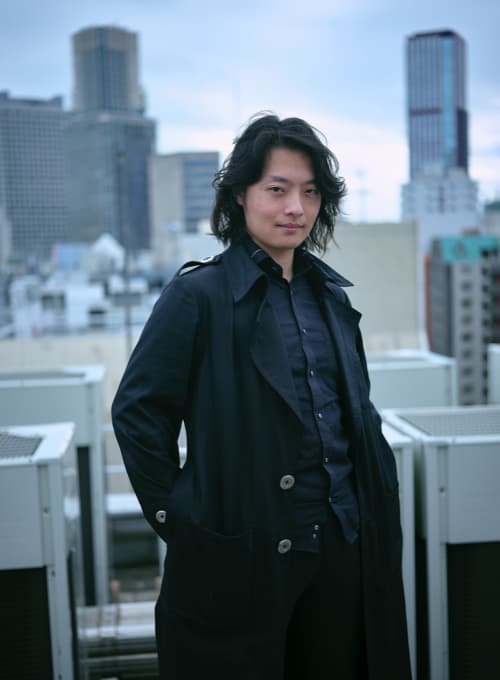
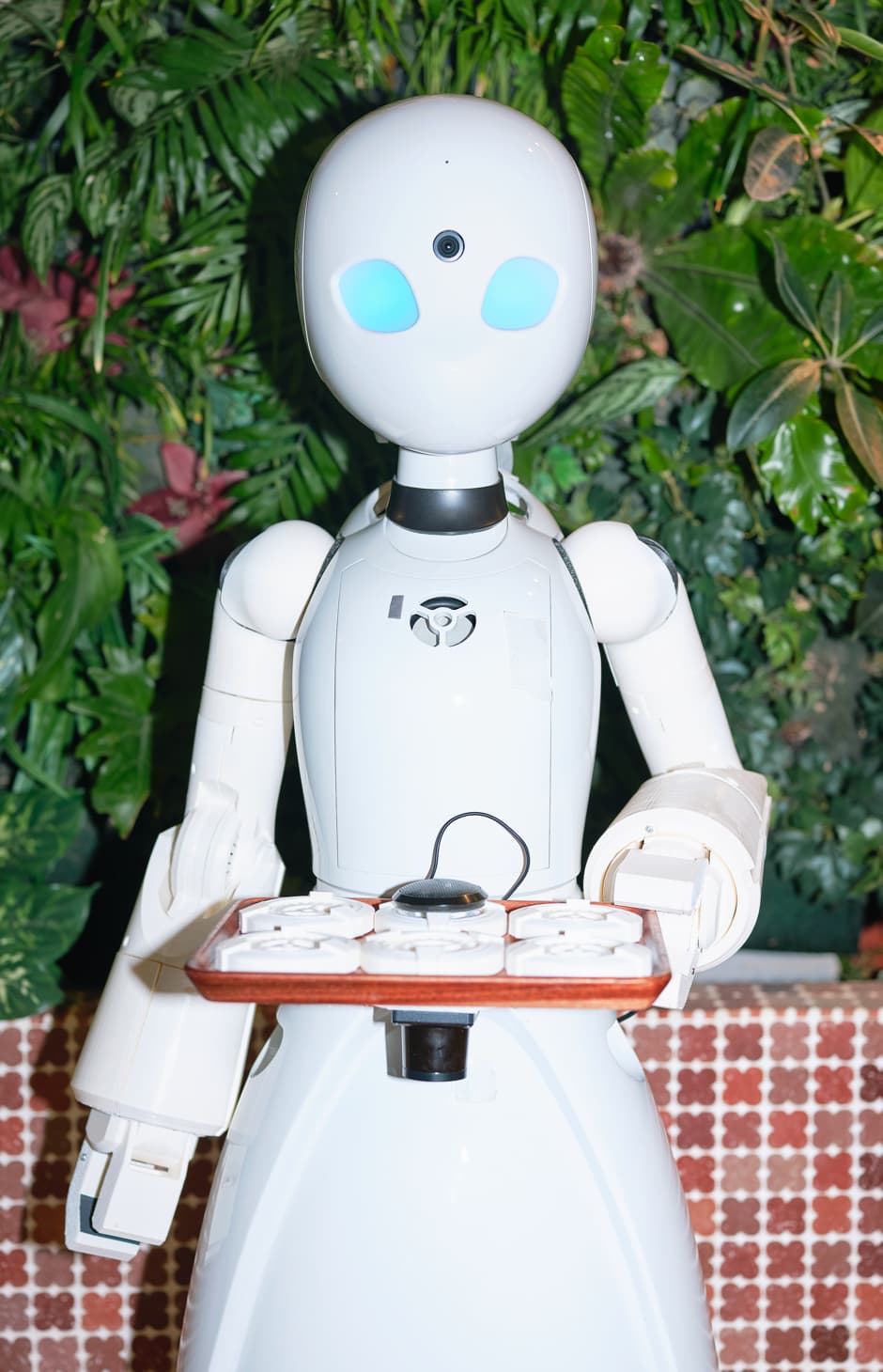
“Being There” and How OriHime Manages to Do It
It’s October, and I’m at “3x3 Lab Future” in Otemachi, Tokyo. I’m here to try the avatar robot café “DAWN,” now in its second test run. Its first test run was held last year.
There are four four-person tables placed on either side of the café. And on each table is the remote-controlled robot “OriHime,” the star of this café. I decide to sit at the table furthest down the room. It seems I’m supposed to order my drink from OriHime, but the robot, sitting right in front of me, doesn’t exude any sign of life. It was clear just from a glance that OriHime wasn’t in operation.
Right that moment, however, the lights in OriHime’s eyes suddenly come on. Its small head swivels slowly from left to right, as if to look at the faces of all four people seated at the table. The very next moment, a voice comes tumbling out from its speakers.
“Welcome to the café! My name is Mikako Fujita, and I’ll be in charge of your table today.”
There are four four-person tables placed on either side of the café. And on each table is the remote-controlled robot “OriHime,” the star of this café. I decide to sit at the table furthest down the room. It seems I’m supposed to order my drink from OriHime, but the robot, sitting right in front of me, doesn’t exude any sign of life. It was clear just from a glance that OriHime wasn’t in operation.
Right that moment, however, the lights in OriHime’s eyes suddenly come on. Its small head swivels slowly from left to right, as if to look at the faces of all four people seated at the table. The very next moment, a voice comes tumbling out from its speakers.
“Welcome to the café! My name is Mikako Fujita, and I’ll be in charge of your table today.”
I’m stunned. OriHime’s voice isn’t anything like the muffled, robotic voice I was expecting. In fact, it sounds like a normal human voice. It sounds a little bit like the voice you hear from the speaker when you order from a fast food drive-through, but the feeling you get is a little different. The speaker at the drive-through is obviously just a speaker, but OriHime has a face. It may be a simple approximation of one, but it’s there. And this “human” voice is coming out of this face. It seems our brains will attribute character and personality to things that have both a physical “face” and a physical “voice.” I felt like the camera embedded into OriHime’s forehead only made this impression stronger. In either case, Mikako Fujita, in the form of OriHime, existed right then and there on that table.
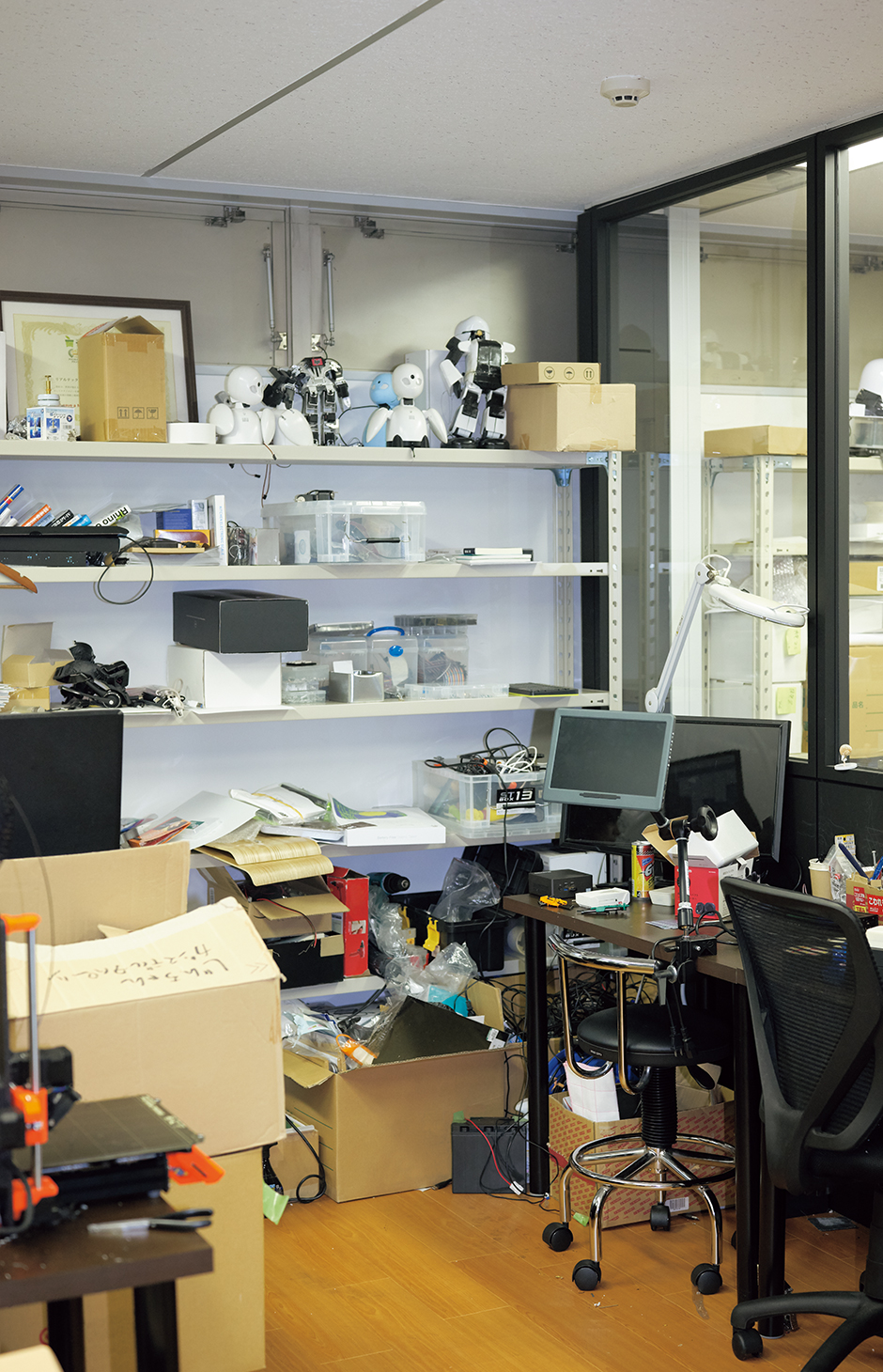
Why OriHime Is an “Avatar Robot”:
Overcoming the Walls to Participation
Overcoming the Walls to Participation
The remote-controlled robot OriHime, developed by Ory Yoshifuji, is also referred to as an “avatar robot.” The people who control them are generally people who have difficulty going outside, whether due to intractable diseases like ALS (amyotrophic lateral sclerosis), or severe impairment. These people are nicknamed “pilots.” Many of the pilots controlling the OriHime robots at DAWN were doing so through their computers at home or in the hospital—including Fujita, who was accessing the OriHime on my table in Otemachi, Tokyo, from her home in Aichi Prefecture.
In a sense, it’s a form of telework. And yet, the feel of it is different from regular telework. It’s hard to explain, but what I felt when I “met” Fujita through OriHime at that café was a decided closeness. Physically, there’d been about 300 kilometers worth of distance between us. And yet, it truly did feel like Fujita was there. And when I say “there,” I don’t really mean the kind of “there” someone is when you’re talking to them via phone or Skype. The difference, it seems, is best expressed through the “avatar” part of the concept. And even better, it seems that this feeling of life, this feeling of reality, isn’t something that’s one-sided. “When I’m in OriHime, it really does feel like I’m actually there.”
In a sense, it’s a form of telework. And yet, the feel of it is different from regular telework. It’s hard to explain, but what I felt when I “met” Fujita through OriHime at that café was a decided closeness. Physically, there’d been about 300 kilometers worth of distance between us. And yet, it truly did feel like Fujita was there. And when I say “there,” I don’t really mean the kind of “there” someone is when you’re talking to them via phone or Skype. The difference, it seems, is best expressed through the “avatar” part of the concept. And even better, it seems that this feeling of life, this feeling of reality, isn’t something that’s one-sided. “When I’m in OriHime, it really does feel like I’m actually there.”
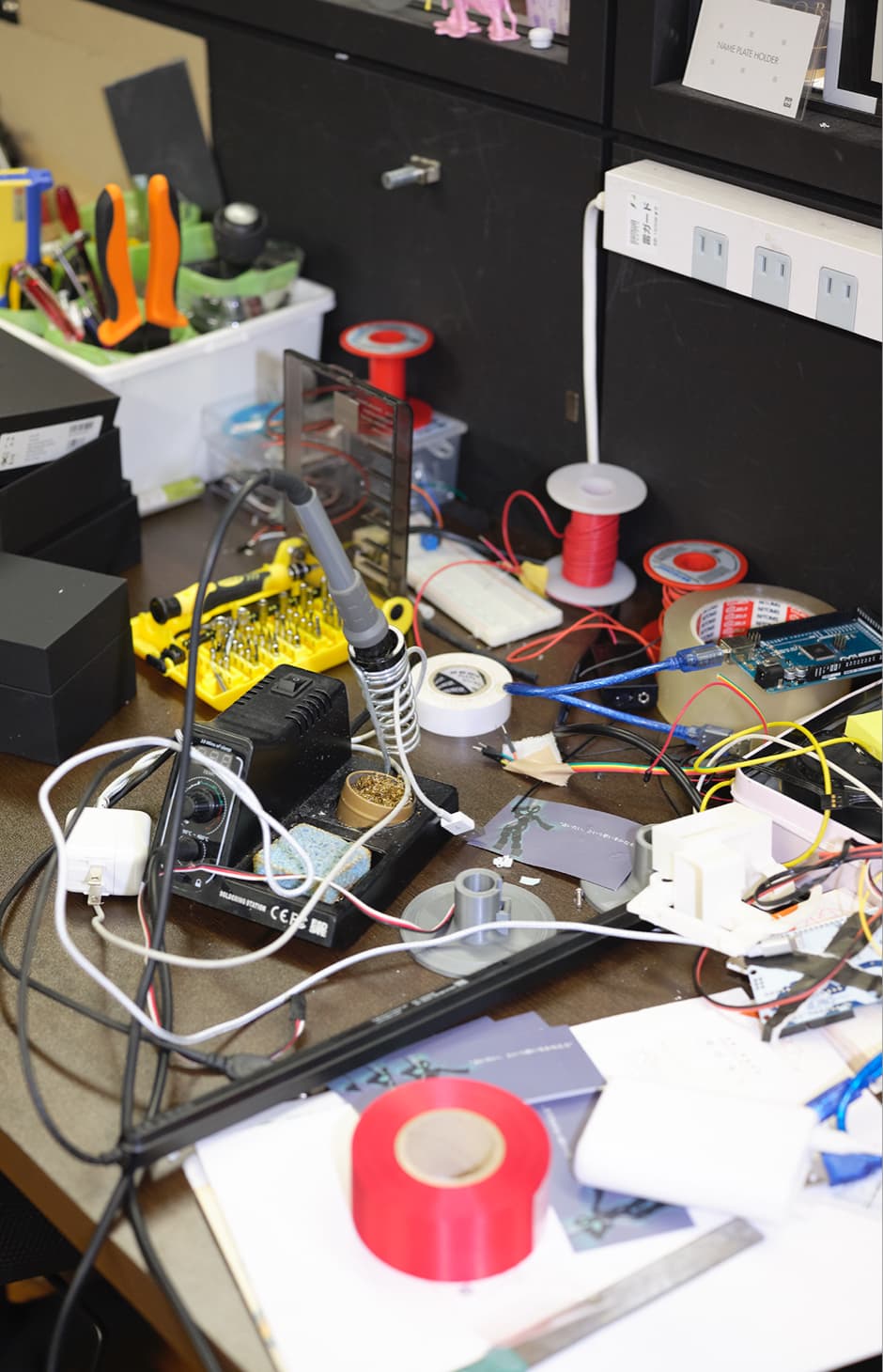
So says Fujita. She has ALS. It had come on about five years ago while she was working at a café as a barista. One day, while at work, the muscles in her hand had just given out, and she’d dropped a coffee cup right in front of a customer. The symptoms gradually grew worse and worse, until she got to the point where she couldn’t go outside by herself anymore. She’d been struggling with loneliness when she read about the project for the avatar robot café on social media.
“I applied to be a pilot right away. I managed to pass the interview, and the first time I ‘got into’ OriHime I actually said out loud, ‘Wow.’ It felt like in a moment, I’d been warped to this completely different place. It wasn’t anything like video calling. It really felt like I was actually there.”
This sense of “being with others” is exactly what Ory had set out to create with OriHime. Recently, Fujita says, she’s trying all kinds of things as OriHime—going to the amusement park with her friend, going on trips overseas, even meeting up with other OriHimes to play soccer. All of these activities are predicated on the idea of “being with others,” a feeling that Ory says was difficult to create with existing tools. He also felt, however, that the difficulty of realizing this feeling spoke to the heart of human communication itself.
“I remember, back when I had to stay home from school, when I couldn’t go to a party that I’d actually really been looking forward to, and how isolated I felt then. Even if my friends tried to show me videos from the party to try to make me feel better, it wouldn’t change the fact that I wasn’t actually there. Or let’s say I was in my house, watching what was happening at the party in real-time through VR—for everyone else, it’s the same as if I wasn’t there. You can use tools to have the same experience as other people, but it’s hard to create the sense that you’re actually there with them.”
“I applied to be a pilot right away. I managed to pass the interview, and the first time I ‘got into’ OriHime I actually said out loud, ‘Wow.’ It felt like in a moment, I’d been warped to this completely different place. It wasn’t anything like video calling. It really felt like I was actually there.”
This sense of “being with others” is exactly what Ory had set out to create with OriHime. Recently, Fujita says, she’s trying all kinds of things as OriHime—going to the amusement park with her friend, going on trips overseas, even meeting up with other OriHimes to play soccer. All of these activities are predicated on the idea of “being with others,” a feeling that Ory says was difficult to create with existing tools. He also felt, however, that the difficulty of realizing this feeling spoke to the heart of human communication itself.
“I remember, back when I had to stay home from school, when I couldn’t go to a party that I’d actually really been looking forward to, and how isolated I felt then. Even if my friends tried to show me videos from the party to try to make me feel better, it wouldn’t change the fact that I wasn’t actually there. Or let’s say I was in my house, watching what was happening at the party in real-time through VR—for everyone else, it’s the same as if I wasn’t there. You can use tools to have the same experience as other people, but it’s hard to create the sense that you’re actually there with them.”
But what does it mean to “have been with others”? Ory defines it as “a state of being when you yourself feel you’ve participated in something, and the people around you also remember you participating too.” What’s important here is the “participation” aspect, or the lack thereof.
“In terms of this idea of ‘participation,’ people tend to be really fixated on the physical aspect of it. Until now, you wouldn’t be seen as having ‘participated’ in something unless you headed out to wherever the event was on your wheelchair. For some reason or another, we tend to focus on whether someone is physically there to determine whether they’re actually ‘with us.’ And for me, places where you can ‘be with others’ are places of ‘belonging.’ That’s why I made OriHime. You don’t have to talk, you don’t have to do anything special. It’s a tool that lets you participate in that setting, just being there, sharing that space and sharing that experience.”
“In terms of this idea of ‘participation,’ people tend to be really fixated on the physical aspect of it. Until now, you wouldn’t be seen as having ‘participated’ in something unless you headed out to wherever the event was on your wheelchair. For some reason or another, we tend to focus on whether someone is physically there to determine whether they’re actually ‘with us.’ And for me, places where you can ‘be with others’ are places of ‘belonging.’ That’s why I made OriHime. You don’t have to talk, you don’t have to do anything special. It’s a tool that lets you participate in that setting, just being there, sharing that space and sharing that experience.”
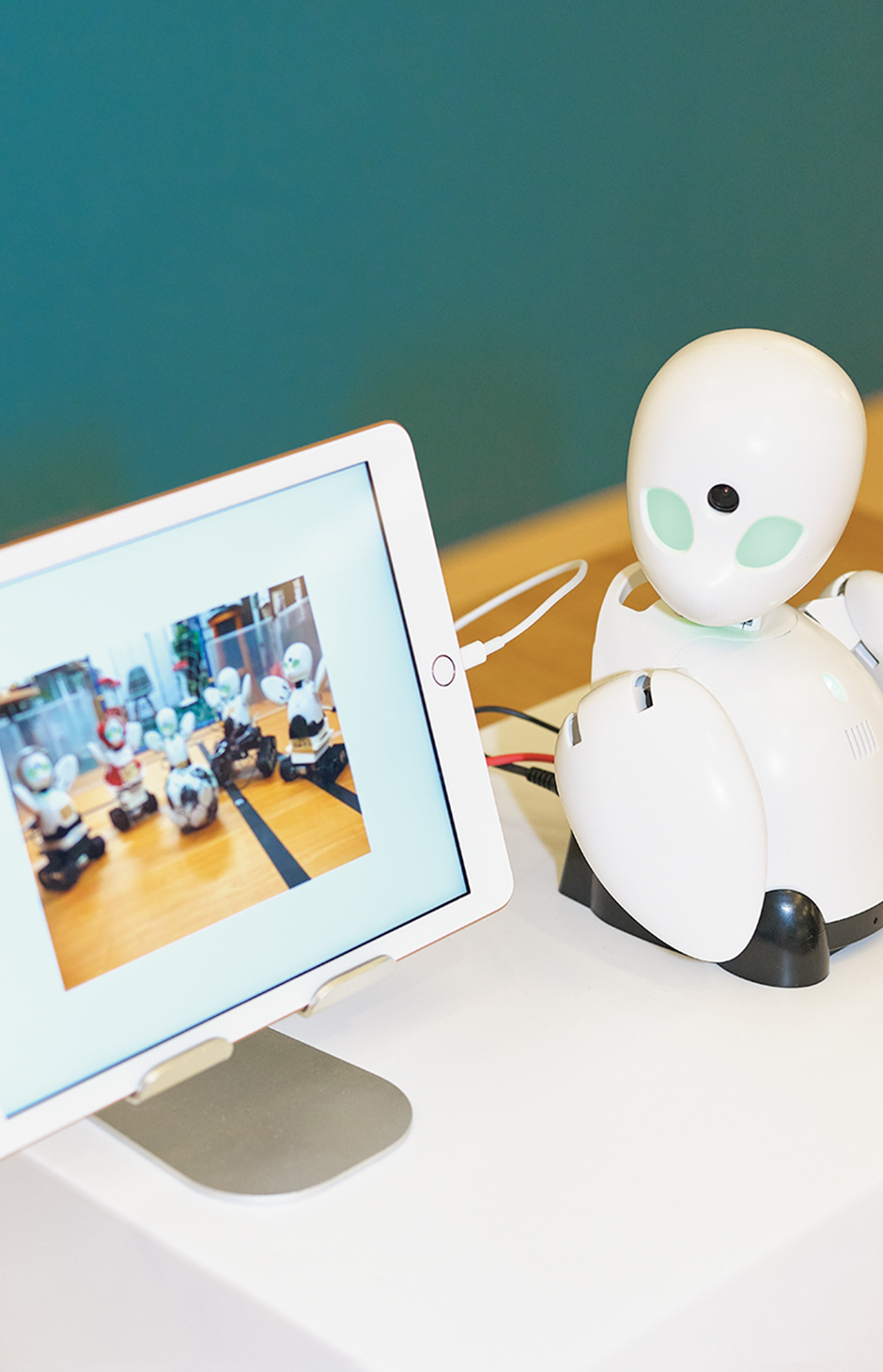
How His Days as a Shut-In Defined His Philosophy:
“Thank You” Is a Finite Resource
“Thank You” Is a Finite Resource
A little bit more about Ory Yoshifuji.
His official title is roboticist, and he currently works as the Director of OryLab, located in Mita, Minato City, Tokyo where he does research and development for projects, including avatar robot OriHime, that seem to challenge what we know about our world. He was born in Nara Prefecture, and his highest level of educational attainment consists of him dropping out of the Faculty of Science and Engineering at Waseda University. His special skill is origami, and he always keeps origami paper in his inside pocket. He tells people his name is “Ory,” not his actual first name Kentaro, to make it easier for them to remember his name. The black lab coat that he wears almost every day, and that’s almost become his trademark, is something that he gets order-made from a lab coat manufacturer in Tokyo. His reasoning for it: “I couldn’t find any clothes I wanted to wear when I was 18” and “I thought lab coats were cool.” He updates this lab coat every few years, and this current one—which incorporates the design elements of a trench coat—is apparently his 5th-generation coat.
The reason he decided to become a researcher dates back to when he was 13. His mother, without asking for his permission, had signed him up for a robot contest. Contestants needed to assemble a store-bought bug-shaped robot, write their own program for it, and have it complete two runs on a designated course, with whoever’s total time was the fastest winning the contest. Lo and behold, Ory won the contest on his very first try. In reality, the favorites for the contest had all performed horribly on their second runs, and the win had at least partly been coincidental. But this coincidence determined the fate of young Ory’s future. Spurred by this victory, he began to participate frequently in robot contests. And while in technical high school, he represented Japan in “Intel ISEF,” known as the “Olympics of science,” with an invention called the “cyber wheelchair,” which could go up and down the stairs, winning the 3rd Award—the best-ever award for a Japanese person in the contest.
His official title is roboticist, and he currently works as the Director of OryLab, located in Mita, Minato City, Tokyo where he does research and development for projects, including avatar robot OriHime, that seem to challenge what we know about our world. He was born in Nara Prefecture, and his highest level of educational attainment consists of him dropping out of the Faculty of Science and Engineering at Waseda University. His special skill is origami, and he always keeps origami paper in his inside pocket. He tells people his name is “Ory,” not his actual first name Kentaro, to make it easier for them to remember his name. The black lab coat that he wears almost every day, and that’s almost become his trademark, is something that he gets order-made from a lab coat manufacturer in Tokyo. His reasoning for it: “I couldn’t find any clothes I wanted to wear when I was 18” and “I thought lab coats were cool.” He updates this lab coat every few years, and this current one—which incorporates the design elements of a trench coat—is apparently his 5th-generation coat.
The reason he decided to become a researcher dates back to when he was 13. His mother, without asking for his permission, had signed him up for a robot contest. Contestants needed to assemble a store-bought bug-shaped robot, write their own program for it, and have it complete two runs on a designated course, with whoever’s total time was the fastest winning the contest. Lo and behold, Ory won the contest on his very first try. In reality, the favorites for the contest had all performed horribly on their second runs, and the win had at least partly been coincidental. But this coincidence determined the fate of young Ory’s future. Spurred by this victory, he began to participate frequently in robot contests. And while in technical high school, he represented Japan in “Intel ISEF,” known as the “Olympics of science,” with an invention called the “cyber wheelchair,” which could go up and down the stairs, winning the 3rd Award—the best-ever award for a Japanese person in the contest.
For many people, this would be an incredible achievement, a dizzying ego-boost. For young Ory, however, the effect was more a sense of emptiness. What exactly did he want to do? What was he supposed to be doing research for? Was he doing this to win contests? Was all of this true to his own life? After a period of intense self-reflection, he at last arrived at his raison d'être, his life goal, the thing that would lead to the eventual development of OriHime—the elimination of loneliness.
As I’ve mentioned several times already, Ory spent about three and a half years, from 5th grade to his second year in junior high school, staying home from school, living the life of a hikikomori (shut-in). You could say that Ory’s principles as a researcher, including his ultimate goal regarding loneliness, were all cultivated during this period of his life. Take, for example, the words “Thank you.” An expression of gratitude. According to Ory, “Thank you” is a finite resource.
As I’ve mentioned several times already, Ory spent about three and a half years, from 5th grade to his second year in junior high school, staying home from school, living the life of a hikikomori (shut-in). You could say that Ory’s principles as a researcher, including his ultimate goal regarding loneliness, were all cultivated during this period of his life. Take, for example, the words “Thank you.” An expression of gratitude. According to Ory, “Thank you” is a finite resource.
How can we create a society where “Thank you” circulates more freely?
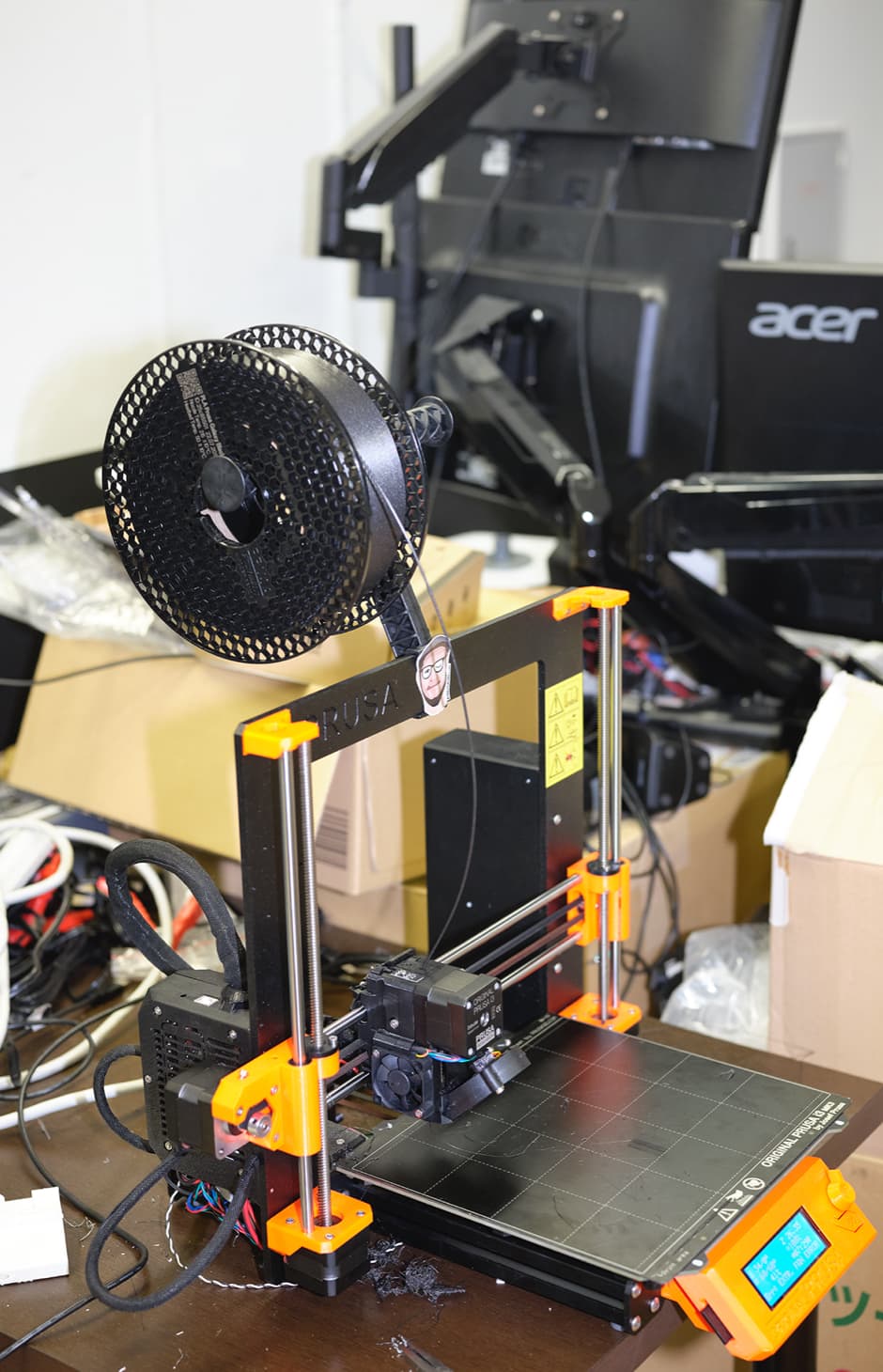
“I think the phrase ‘Thank you’ is like money. And by that I mean it’s finite. So if you’re always saying ‘Thank you,’ over time you stop being able to say ‘Thank you.’ This actually happened to me during my shut-in days.
In the beginning, of course, you’re able to say ‘Thank you’ every time someone does something for you. But over time, it becomes ‘I’m sorry.’ ‘I’m sorry,’ ‘I’m sorry,’ ‘I’m sorry.’ It’s because all I was ever doing was saying ‘Thank you,’ and I was never getting ‘Thank you’ back. My ‘Thank you’ bank had dried up. And through this, I also felt like I was losing my sense of self.
For example, let’s say I make some kind of mistake and have to have a press conference to apologize for it. I think, for me to do that press conference, I’d have to take off this black lab coat. It’s a symbol of mine, but when people have to apologize like that, the general consensus is that you have to shed your ‘youness.’ If you think about it that way, of course it’s really, really hard to live your life always saying ‘I’m sorry,’ and it was really, really hard for me. Because I wanted to live my life saying ‘Thank you’ and getting ‘Thank you’ in return, and I wasn’t able to do that.”
In the beginning, of course, you’re able to say ‘Thank you’ every time someone does something for you. But over time, it becomes ‘I’m sorry.’ ‘I’m sorry,’ ‘I’m sorry,’ ‘I’m sorry.’ It’s because all I was ever doing was saying ‘Thank you,’ and I was never getting ‘Thank you’ back. My ‘Thank you’ bank had dried up. And through this, I also felt like I was losing my sense of self.
For example, let’s say I make some kind of mistake and have to have a press conference to apologize for it. I think, for me to do that press conference, I’d have to take off this black lab coat. It’s a symbol of mine, but when people have to apologize like that, the general consensus is that you have to shed your ‘youness.’ If you think about it that way, of course it’s really, really hard to live your life always saying ‘I’m sorry,’ and it was really, really hard for me. Because I wanted to live my life saying ‘Thank you’ and getting ‘Thank you’ in return, and I wasn’t able to do that.”
These thoughts have molded the way Ory approaches his work. This includes the avatar robot café. It would be unsavory for him to just do this thing for the pilots, and have the pilots say “Thank you” to him and only him. For Ory, the ultimate goal is to “create an environment where every person has their own defined role.”
“Now, I’m fortunate in that I have a lot of people who tell me, ‘Thank you.’ But what can we do so that everyone gets a ‘Thank you,’ and not just a small subset of people? How can we create a society where ‘Thank you’ circulates more freely? That is an essential theme for me.”
“Now, I’m fortunate in that I have a lot of people who tell me, ‘Thank you.’ But what can we do so that everyone gets a ‘Thank you,’ and not just a small subset of people? How can we create a society where ‘Thank you’ circulates more freely? That is an essential theme for me.”
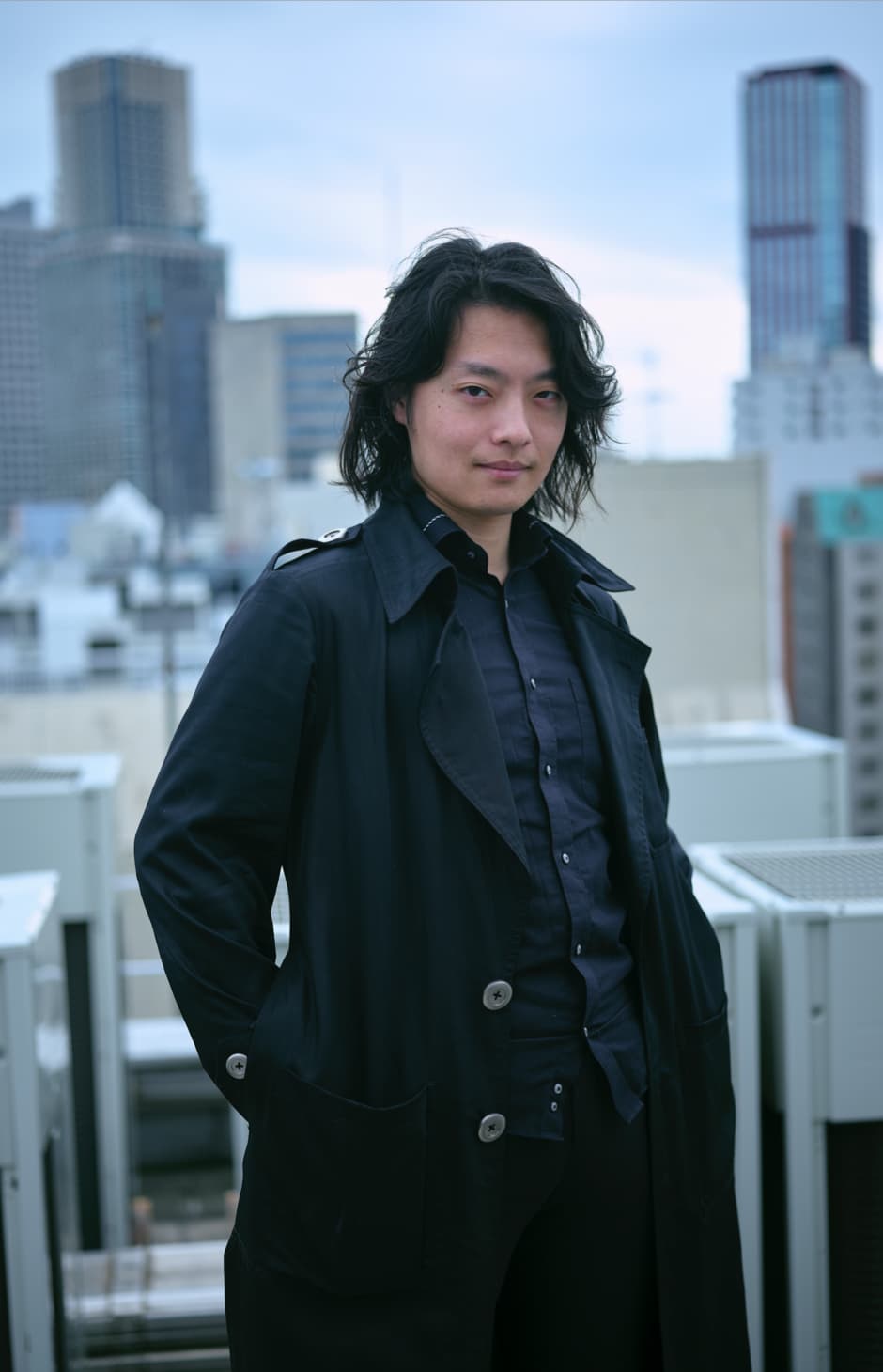
The World His Late Best Friend Would Have Wanted:
Creating a New Way to Belong
Creating a New Way to Belong
I’ll be honest. Until now, I’d been skeptical about the discourse of “building a more comfortable society for people with impairment,” the kind of discourse that’s been spread by the so-called barrier-free movement. I’d felt that this kind of discourse was perhaps pressuring people—whether with or without impairment—into an overly independent existence. I’d felt that at the base of this discourse was an ideology that romanticizes societies where people live without depending on one another, without causing each other “trouble.” With this kind of ideology, the goal would be a society where there’s no need for “Thank you,” no need for “I’m sorry.”
When I told Ory about my misgivings, he replied, “I completely agree. I think, actually, that that’s the limit of our current capitalist society. Companies like Google and Amazon are the prime examples of this, but nowadays, a single company or a single person can have just so much influence and power, and there are so many roles that are concentrated in these places. I think what we’ll be seeing in the future is role inequality. And this kind of inequality, you can’t solve even with universal basic income, for example. Of course it’s important to have enough money to live, but that isn’t necessarily what makes people happy. People like being relied upon, and they feel happiness when they feel needed. In that sense, OriHime is also a tool to realize the kind of society where people can rely and be relied upon, in a way that transcends this kind of inequality.”
When I told Ory about my misgivings, he replied, “I completely agree. I think, actually, that that’s the limit of our current capitalist society. Companies like Google and Amazon are the prime examples of this, but nowadays, a single company or a single person can have just so much influence and power, and there are so many roles that are concentrated in these places. I think what we’ll be seeing in the future is role inequality. And this kind of inequality, you can’t solve even with universal basic income, for example. Of course it’s important to have enough money to live, but that isn’t necessarily what makes people happy. People like being relied upon, and they feel happiness when they feel needed. In that sense, OriHime is also a tool to realize the kind of society where people can rely and be relied upon, in a way that transcends this kind of inequality.”
In the past, Ory had had a best friend with whom he exchanged “Thank you’s.” His name was Yuta Banda. Banda, who was bedridden from a cervical spine injury, was able to get around with Ory via OriHime, and also worked as a secretary at OryLab. Ory says that many of the most important ideas he’s had over the course of his career were born from the heartfelt discussions they’d had while spending time together.
“For example, the concept of body sharing. This was something that was born out of my relationship with Banda. This is related to what I was saying earlier, but it’s impossible for one person to be able to do everything. And so it has to be true that if different people, all with different skills, share the same body, they’ll all be able to help each other. A personal example—I’m very bad at remembering names. But if I place Banda’s OriHime on my shoulder, he could use his eyes and his brain to remember people’s names and faces for me. And in return, I’d provide Banda the legs to move around. Wouldn’t you say that’s an even trade?
This is the kind of thing I would talk about with Banda. Banda’s philosophy is deeply engrained in OriHime too. But he passed away in 2017, before the café was made. The fact that I can’t hear his thoughts on the café, his analysis of the café—I feel like it’s slowed down the evolution of humanity. That’s how important Banda was to me.”
“For example, the concept of body sharing. This was something that was born out of my relationship with Banda. This is related to what I was saying earlier, but it’s impossible for one person to be able to do everything. And so it has to be true that if different people, all with different skills, share the same body, they’ll all be able to help each other. A personal example—I’m very bad at remembering names. But if I place Banda’s OriHime on my shoulder, he could use his eyes and his brain to remember people’s names and faces for me. And in return, I’d provide Banda the legs to move around. Wouldn’t you say that’s an even trade?
This is the kind of thing I would talk about with Banda. Banda’s philosophy is deeply engrained in OriHime too. But he passed away in 2017, before the café was made. The fact that I can’t hear his thoughts on the café, his analysis of the café—I feel like it’s slowed down the evolution of humanity. That’s how important Banda was to me.”
I like failure, and I get nervous when there aren’t any failures
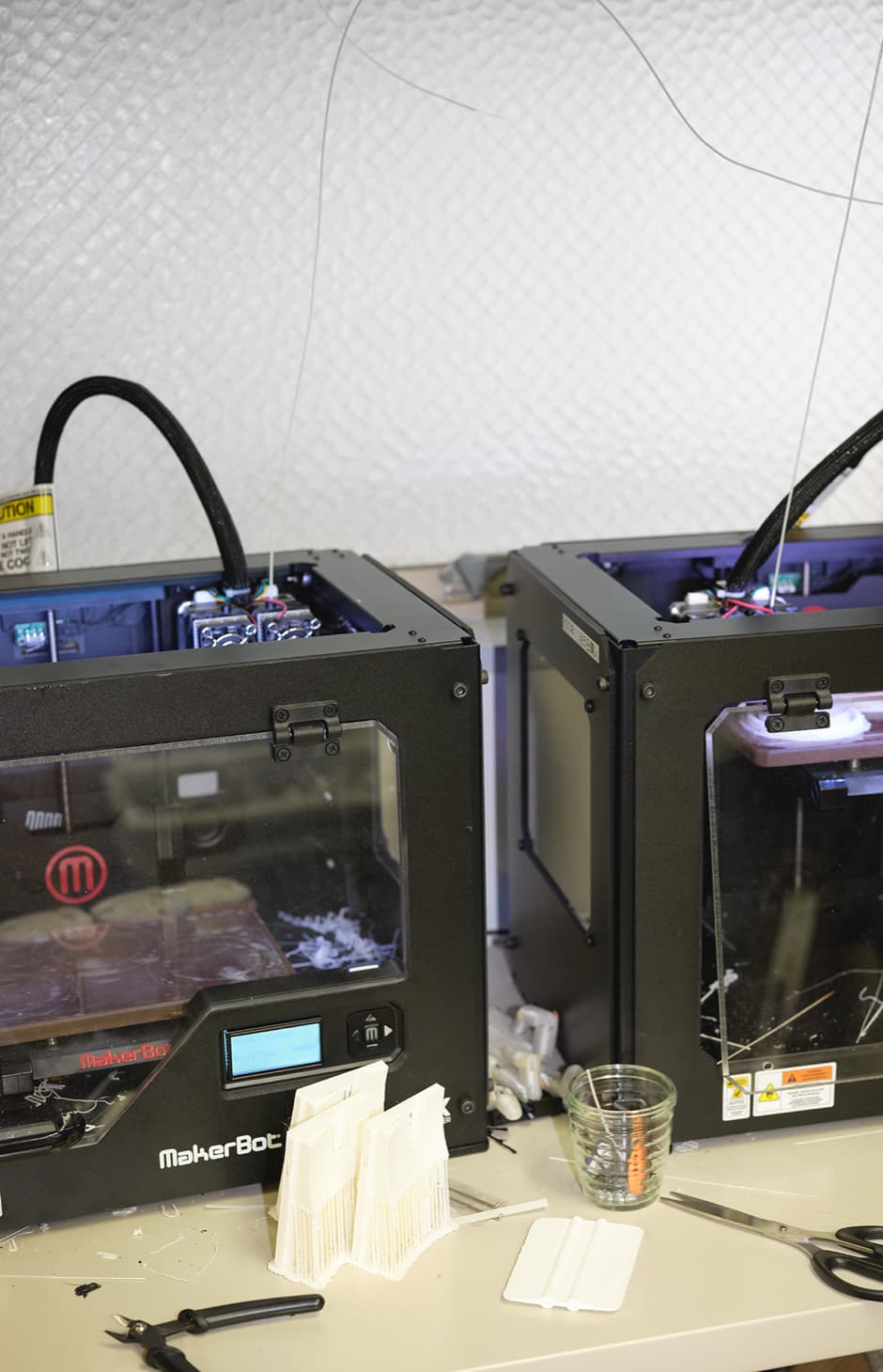
This goal to establish an avatar robot café in 2020—the year of the Tokyo Olympic and Paralympic Games—was, in fact, also Banda’s last wish. What kind of insight has Ory gained in the past two years of test runs?
“I think I could mess up more [laughs]. I like failure, and I get nervous when there aren’t any failures.”
He smiles defiantly. It seems that for Ory, things like failure and impairment are opportunities. It’s because we experience failure, because we have impairment, that we have to think. To transform “I can’t” into “I can.” This may seem like a naïve, idealistic approach in what is a very complex reality. With OriHime, however, Ory has turned every new impairment he has encountered into an opportunity for evolution. It was only because Ory met a woman with ALS who was paralyzed below her neck, that it is now possible to control OriHime via eye movements only. The woman had even said about her motivation to contribute to the development process, “If, through this, I’m able to be of use to somebody, I’ll feel like me developing ALS will have meant something.” In the end, however, the woman decided not to use the respirator that would extend her life. It was very sad, says Ory. But we still have to do this. Because of things like this.
Fujita had said that, if possible, she would want to brew coffee again as a barista, through OriHime. Amongst her OriHime friends, there’s even talk of wanting to do fencing matches using the OriHimes. Ory had overcome one impairment, and in doing so had discovered many, many more. This new way of “belonging,” created by a man who’d considered choosing death, who’d believed that there was nowhere on this Earth where he belonged, is now on its way to creating even more ways to belong in this world.
“I think I could mess up more [laughs]. I like failure, and I get nervous when there aren’t any failures.”
He smiles defiantly. It seems that for Ory, things like failure and impairment are opportunities. It’s because we experience failure, because we have impairment, that we have to think. To transform “I can’t” into “I can.” This may seem like a naïve, idealistic approach in what is a very complex reality. With OriHime, however, Ory has turned every new impairment he has encountered into an opportunity for evolution. It was only because Ory met a woman with ALS who was paralyzed below her neck, that it is now possible to control OriHime via eye movements only. The woman had even said about her motivation to contribute to the development process, “If, through this, I’m able to be of use to somebody, I’ll feel like me developing ALS will have meant something.” In the end, however, the woman decided not to use the respirator that would extend her life. It was very sad, says Ory. But we still have to do this. Because of things like this.
Fujita had said that, if possible, she would want to brew coffee again as a barista, through OriHime. Amongst her OriHime friends, there’s even talk of wanting to do fencing matches using the OriHimes. Ory had overcome one impairment, and in doing so had discovered many, many more. This new way of “belonging,” created by a man who’d considered choosing death, who’d believed that there was nowhere on this Earth where he belonged, is now on its way to creating even more ways to belong in this world.
Ory YOSHIFUJI | Roboticist
Born in Nara Prefecture in 1987. Real name is Kentaro Yoshifuji. Roboticist. CEO & Director of OryLab Inc. Has made it his life mission to “eliminate human loneliness,” doing research and development for a variety of projects, including “OriHime.” Has been recognized by various industries, and was listed in “30 Under 30 2016 Asia” on Forbes Magazine in the U.S. Also works as a Specially Appointed Professor at Digital Hollywood University.





